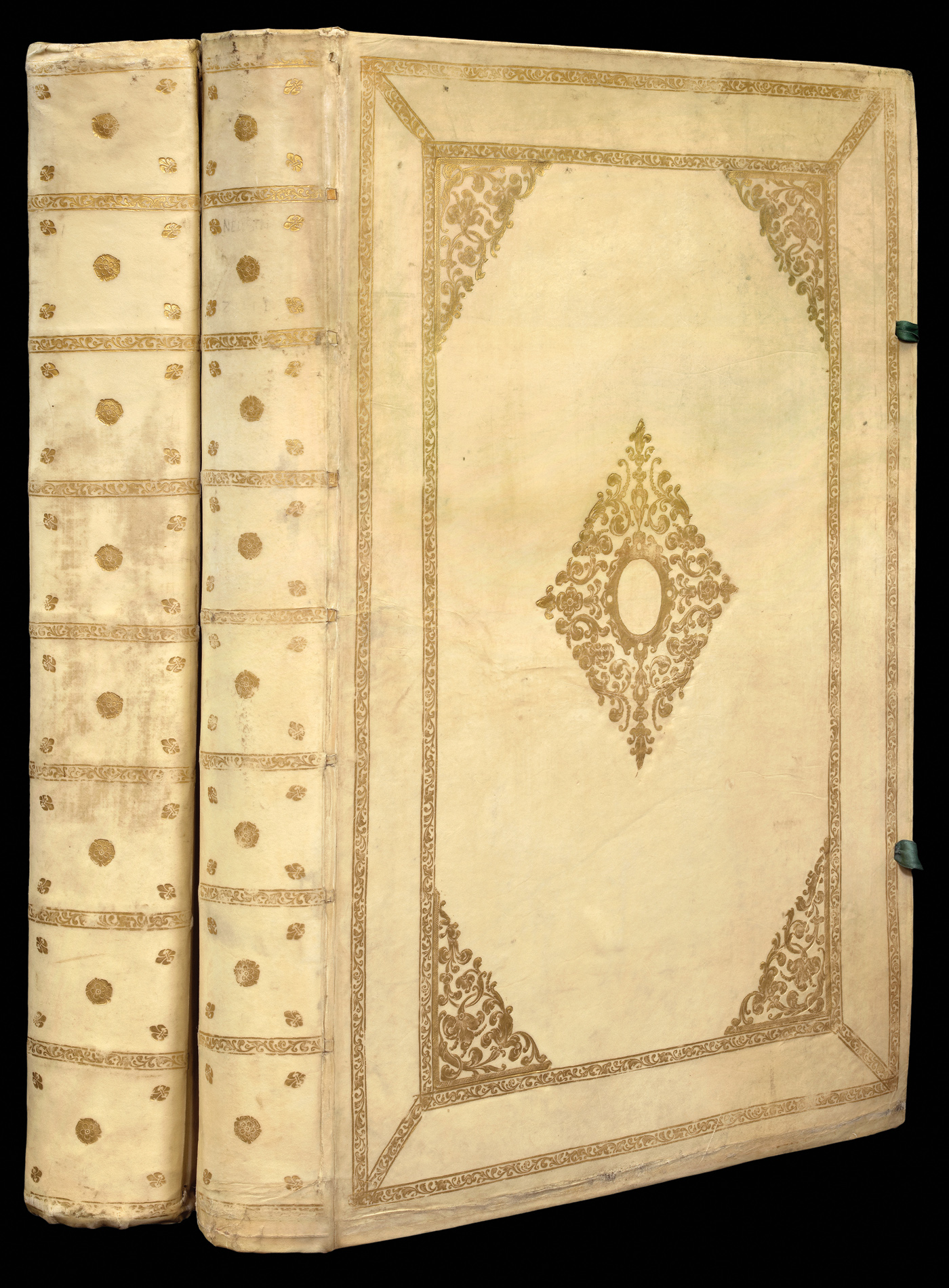



Tooneel der staden van de Vereenighde Nederlanden's konings Nederlanden.
- Author: BLAEU, Willem and Johannes
- Publication place: Amsterdam
- Publisher: Johannes Blaeu
- Publication date: 1652.
- Physical description: Dutch text. 2 volumes. Folio atlas (545 by 355 mm). Engraved title-pages with fine contemporary hand-colour and heightened in gold, 225 double-page sheets with over 300 maps and views, two maps and five views supplied from another example, one map and one view supplied from Latin 1652 edition, publisher's vellum, gilt.
- Dimensions: 545 by 355mm. (21.5 by 14 inches).
- Inventory reference: 11582
Notes
First Dutch text edition, and a fine example with contemporary colouring of Blaeu’s great work on the towns of the Netherlands.
“Of all the Blaeu atlases, the townbooks of the Netherlands are held in the highest esteem in the Netherlands. This is partly due to the fact that their composition is linked up with the struggle for independence from Spain of the Dutch Republic in the 17th-Century. Bound up, by sentiment, with the most dramatic and heroic period of the shaping of the Dutch State it shows the proud and industrious cities of the North in their full splendour. Before the end of the battle with Spain, Joan Blaeu planned his town books which were to contain ca. 220 maps, evenly distributed over two volumes: the towns of the Republic in Volume I, the towns belonging to Spain in Volume II. In the planning stage of the atlas, some years before 1648, while the text had been printed and also most of the plates, Joan Blaeu could not know how the Peace treaty would turn out. In the last decades of the war, several towns and fortresses in the south had been or were besieged by the army of the Republic and Blaeu had to take a decision as to inclusion of these disputed towns into the two volumes of his atlas. The very first [Latin text] edition of his town atlas reflects the situation during the last years of the war: 26 maps of towns and fortresses are incorporated in the “Spanish” volume, but had to be transferred to the “Spanish” side. Consequently, apart from the very rare first edition, the volumes I and II are uneven in the number of maps, the first volume being the larger. At the end of the Index of the first edition, printed in 1649 after the Treaty of Westphalia, Joan Blaeu [gives a] notice to the reader” explaining the arrangement of the maps (Koeman I, page 295).
The Blaeu family firm was founded by Willem Janzoon Blaeu (1571-1638) in 1596. He was eventually joined by his sons, Cornelius (1616-1648) and Joan (1596-1673). The firm became the most productive cartographic establishment in the Netherlands until it was destroyed by fire in 1672. The elder Blaeu initiated the great series of atlases that culminated in the “Atlas Maior”, in which Joannes Blaeu incorporated much of the geographical knowledge bequeathed him by his father.
Bibliography
- Phillips 3076
- Koeman I, Bl 68A & 68B
- Van der Krogt 43:121.
 Rare Maps
Rare Maps  Rare Atlases
Rare Atlases  Rare Books
Rare Books  Rare Prints
Rare Prints  Globes and Planetaria
Globes and Planetaria 










